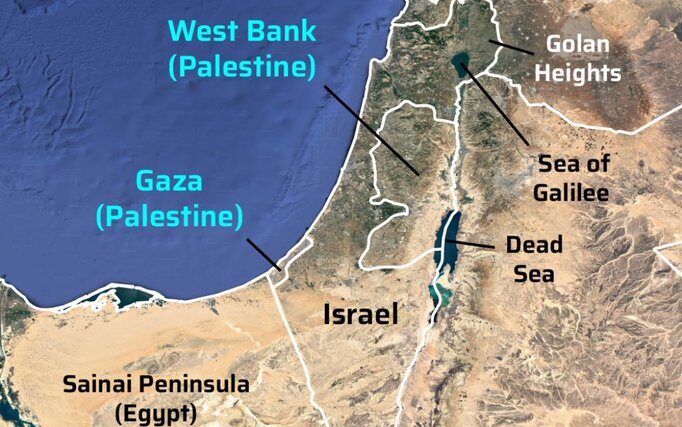UN agencies launch catch-up immunisation campaign in Gaza
UNICEF, UNRWA, WHO and partners, in collaboration with the Ministry of Health, are launching an integrated catch-up campaign for routine immunisation, nutrition, and growth monitoring in the Gaza Strip to reach 44,000 children cut off from essential life-saving services by two years of conflict.
The campaign will be implemented in three rounds to reach children with three doses of Pentavalent, Polio, Rota & Pneumococcal Conjugate Vaccine and two doses of Measles, Mumps, Rubella vaccine. The first round of the campaign will take place from 9 to 18 November.
It is estimated that 1 in 5 children under three years of age are either zero-dose or have missed vaccinations because of the conflict, putting them at risk of vaccine-preventable disease outbreaks.
The catch-up campaign aims to provide these children with routine childhood vaccines that protect against measles, mumps, and rubella, diphtheria, tetanus, pertussis, hepatitis B, tuberculosis, polio, rotavirus and pneumonia.
To help address the devastating impacts of the conflict on children’s health and nutrition, UNICEF and partners will also screen these children for malnutrition and ensure those identified with malnutrition receive treatment and ongoing follow-up. Children with complications due to moderate and severe acute malnutrition will be treated at WHO-supported inpatient stabilisation centres.
“After two years of relentless violence that claimed the lives of more than 20,000 children in the Gaza Strip, we finally have an opportunity to protect those who survived, said Jonathan Veitch, UNICEF Special Representative in the State of Palestine.
“Vaccinating every child, and supporting their health and nutrition, is not just a humanitarian intervention; it is a moral imperative. It is how we safeguard the future of children born into catastrophe and begin to rebuild hope in the midst of devastation.”
For three rounds of the campaign, UNICEF has brought all 11 vaccines, syringes, cold chain equipment and nutrition supplies into the Gaza Strip. Detailed plans to support vaccinators and social mobilizers to reach eligible children across the Gaza Strip have been developed jointly by UNICEF, WHO, UNRWA and MoH. Vaccinations will take place at 149 health facilities and 10 mobile vehicles across the Gaza Strip.
Over 450 health workers and support staff have been trained by UNICEF, WHO, MoH and partners to support vaccination efforts. Additionally, 149 medical doctors have been trained by the WHO to recognise, report and investigate any health concerns following immunisation, though such cases are extremely rare.
WHO will coordinate with Health Cluster partners to implement the campaign and deploy monitoring teams on the ground to ensure quality and coverage.
UNICEF is working to rehabilitate another 15 health points, while WHO is rehabilitating 20 health facilities, which have been partially or fully destroyed, to further expand the number of service delivery points.
WHO is also providing ongoing support to maintain services, flow of medical supplies and operations of all major health facilities delivering vaccination during the campaign, rehabilitating the central laboratory in Gaza and expanding overall efforts to strengthen disease detection, reporting and surveillance for a timely response.
“This immunisation campaign is a lifeline, protecting children’s health and restoring hope for the future,” said Richard Peeperkorn, WHO Representative in the occupied Palestinian territory.
“It’s a crucial step in strengthening essential health services and protecting vulnerable children in Gaza who have been cut off for far too long. Yet this is only one piece of the puzzle. Much more is needed, and WHO is working to rebuild Gaza’s fragile health system so every child, every community, can access the care they deserve.”
Before the conflict, Gaza maintained 54 immunisation facilities and ranked among the top globally with an overall 98 per cent vaccination coverage rate for children. Today, 31 facilities are no longer operational after being damaged or destroyed in indiscriminate attacks, while the routine vaccination coverage rate has dropped below 70 per cent.
The onset of harsh winter conditions makes this campaign even more urgent, as deadly but preventable childhood diseases spread across the Gaza Strip. Phases two and three of the campaign, which aim to provide the children with second and third doses of the vaccines, are planned for December 2025 and January 2026, respectively.
The campaign is carried out in close partnership with the Palestinian Ministry of Health and local health partners, with thanks to Gavi, the Vaccine Alliance, for financial support.
READ ALSO: ANALYSIS: Civilians in Nigeria’s conflict zones risk more harm if Trump orders military action
The success of the campaign depends on the full respect of the ceasefire, ensuring that families, health professionals and other humanitarian workers can reach vaccination sites freely and safely.
While this catch-up campaign is an emergency intervention, the ultimate objective is to support a return to pre-conflict vaccination coverage levels. Achieving this will require urgent rehabilitation of the health system and ongoing donor support to UNICEF and WHO.


